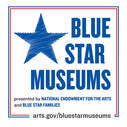The Columbia River Maritime Museum was founded on the dream of forming a world-class museum to interpret and protect the incredible history of the Pacific Northwest. It was this passion for the area and its history that was the driving force behind the museum’s founder Rolf Klep and a small group of naval veterans and fishing industry executives who all shared a fascination for preserving Pacific Northwest maritime history.
This group developed a bold and visionary plan for a maritime museum in Astoria, Oregon, near the mouth of the Columbia River. In 1962, the idea came to fruition in the form of the Columbia River Maritime Museum, a museum that today has become one of the nation’s finest institutions of maritime history, boasting the largest collection of Pacific Northwest maritime artifacts in the country.
For centuries, the Columbia River has served as the defining element of the Pacific Northwest, for it has oriented the culture, shaped the industries, and enriched the lives of this precious and unique region. The great Columbia River is a source of rich and diverse maritime history, from a central thoroughfare for the varied and complex trade routes of the native inhabitants of the region, to its exploration by Captain Robert Gray in 1792 and the heyday of salmon fishing around the 1880s to what is has become today - a shipping channel tamed into a series of long lakes all the way up to Lewiston, Idaho.
This group developed a bold and visionary plan for a maritime museum in Astoria, Oregon, near the mouth of the Columbia River. In 1962, the idea came to fruition in the form of the Columbia River Maritime Museum, a museum that today has become one of the nation’s finest institutions of maritime history, boasting the largest collection of Pacific Northwest maritime artifacts in the country.
For centuries, the Columbia River has served as the defining element of the Pacific Northwest, for it has oriented the culture, shaped the industries, and enriched the lives of this precious and unique region. The great Columbia River is a source of rich and diverse maritime history, from a central thoroughfare for the varied and complex trade routes of the native inhabitants of the region, to its exploration by Captain Robert Gray in 1792 and the heyday of salmon fishing around the 1880s to what is has become today - a shipping channel tamed into a series of long lakes all the way up to Lewiston, Idaho.





